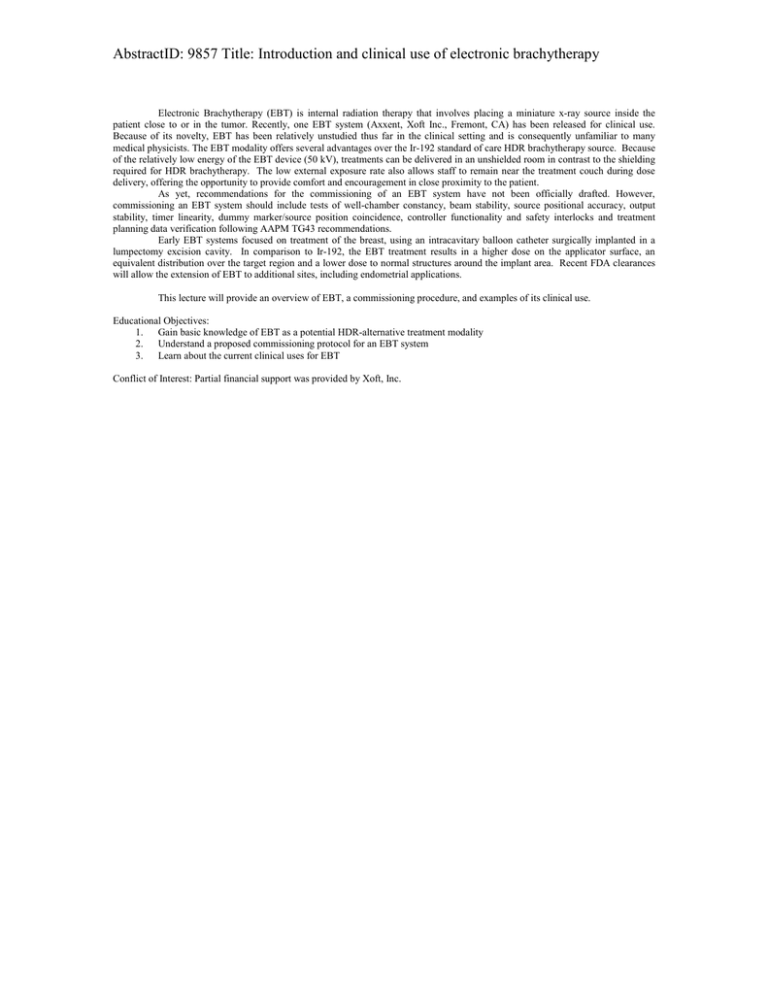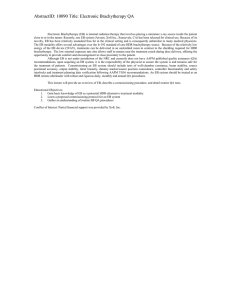AbstractID: 9857 Title: Introduction and clinical use of electronic brachytherapy
advertisement

AbstractID: 9857 Title: Introduction and clinical use of electronic brachytherapy Electronic Brachytherapy (EBT) is internal radiation therapy that involves placing a miniature x-ray source inside the patient close to or in the tumor. Recently, one EBT system (Axxent, Xoft Inc., Fremont, CA) has been released for clinical use. Because of its novelty, EBT has been relatively unstudied thus far in the clinical setting and is consequently unfamiliar to many medical physicists. The EBT modality offers several advantages over the Ir-192 standard of care HDR brachytherapy source. Because of the relatively low energy of the EBT device (50 kV), treatments can be delivered in an unshielded room in contrast to the shielding required for HDR brachytherapy. The low external exposure rate also allows staff to remain near the treatment couch during dose delivery, offering the opportunity to provide comfort and encouragement in close proximity to the patient. As yet, recommendations for the commissioning of an EBT system have not been officially drafted. However, commissioning an EBT system should include tests of well-chamber constancy, beam stability, source positional accuracy, output stability, timer linearity, dummy marker/source position coincidence, controller functionality and safety interlocks and treatment planning data verification following AAPM TG43 recommendations. Early EBT systems focused on treatment of the breast, using an intracavitary balloon catheter surgically implanted in a lumpectomy excision cavity. In comparison to Ir-192, the EBT treatment results in a higher dose on the applicator surface, an equivalent distribution over the target region and a lower dose to normal structures around the implant area. Recent FDA clearances will allow the extension of EBT to additional sites, including endometrial applications. This lecture will provide an overview of EBT, a commissioning procedure, and examples of its clinical use. Educational Objectives: 1. Gain basic knowledge of EBT as a potential HDR-alternative treatment modality 2. Understand a proposed commissioning protocol for an EBT system 3. Learn about the current clinical uses for EBT Conflict of Interest: Partial financial support was provided by Xoft, Inc.










